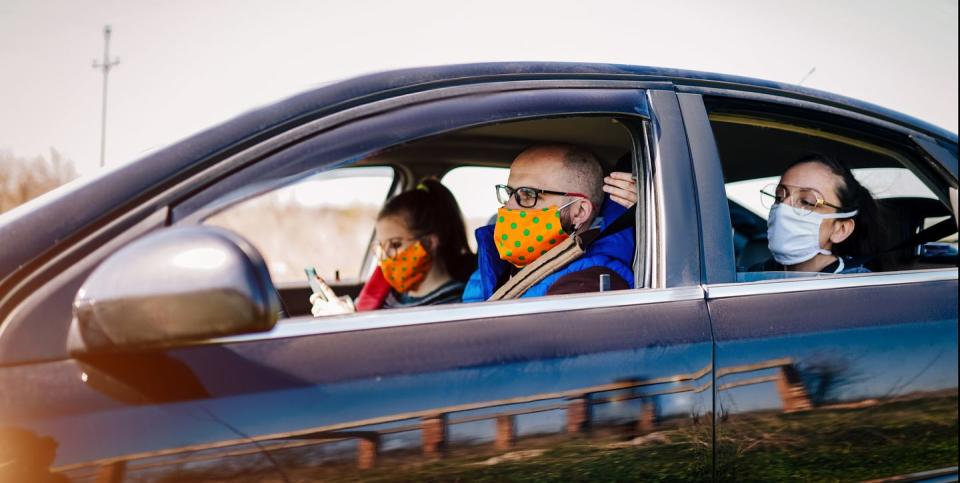Yes, Rolling Down Windows Can Reduce COVID Transmissions in a Car

File this one under "common sense that has now been confirmed," but if you've been curious whether or not opening the windows in a moving car will help reduce the chance of catching COVID-19, rest assured.
A new study in Science Advances proves that opening up all of the windows is the best strategy, but even opening one does help.
If you can't open all four windows, open two on opposite sites to create an "air curtain" that keeps moving air between the passengers, minimizing the potential for the virus to move from driver to passenger.
Cranking up the tunes and blasting them through open windows isn't a common move during the winter, but this year, that might be just the thing to ask your Lyft driver to do. While the music is optional—may we recommend Pearl Jam's "Alive"?—there are good medical reasons to make the ask. Given the chance of catching COVID-19, it's valuable to now have proof that increased airflow means decreased chance of catching the virus while riding in a car.
A new study by researchers at the University of Massachusetts Amherst and Brown University, published this month in Science Advances, looked at "complex airflow patterns that exist inside the passenger cabin of an automobile" and how these patterns affect possible virus transmission between a driver and a passenger. The authors note that a viral load can build up inside the microclimate of a vehicle even on drives as short as 15 minutes, and the virus can remain viable within aerosols for up to three hours.
The study authors looked at just one basic interior configuration: one driver in a left-hand-drive vehicle and one passenger sitting in the back right of a five-seat, four-door passenger car. They used a Toyota Prius moving at 50 mph as the model for the vehicle's exterior geometry. Under these settings, the authors then simulated the in-vehicle airflow under six different window configurations.
All the Windows Down: Safest
The safest option—here defined as the situation with the highest amount of air changes per hour (ACH) and thus the most airflow to get potential viruses out of the car—is with all of the windows down. Shocker, we know, but the science says that having all of the windows down "establishes two distinct airflow paths within the car cabin, which help to isolate the left and right sides, and maximizes the ACH in the passenger cabin." This results in an estimated 0.2 to 2 percent of the aerosols exhaled by a driver reaching the passenger. With all of the windows up, this number was around 8 to 10 percent. The second-best configuration is to have three windows down. The fourth window to leave up is the rear passenger window (next to where the passenger is sitting).
Two Windows (Not Next to People) Is Second-Safest
The one surprising finding is that opening the two windows closest to the two people is not that much better for ACH than having all the windows down. Having just these two windows open "does not effectively dilute the tracer particles and . . . the passenger receives a fairly large contaminant load from the driver," the study says. It's safer, it turns out, to keep the opposing (that is, the front passenger and rear driver's side) windows open to create a sort of "air curtain" between the vehicle's two occupants. Wearing masks or installing physical barriers in the car, the authors say, can be effective steps as well.
Looking forward, the authors plan on studying just how vehicle speed affects in-vehicle airflow and how much rolling the windows down part of the way helps, or hurts, the chance of infection. Perhaps we'll hear the results by summertime.
You Might Also Like

 Yahoo Finance
Yahoo Finance 